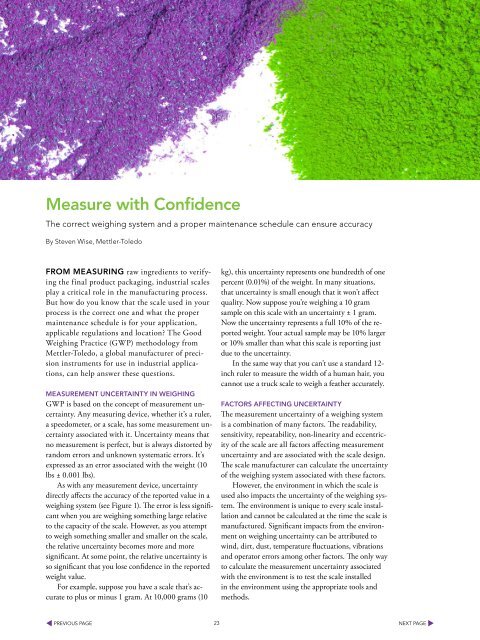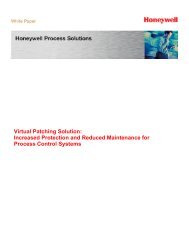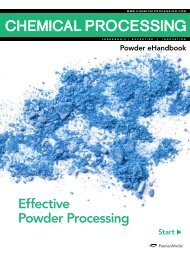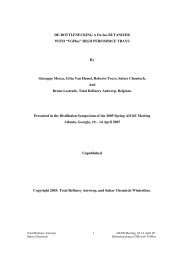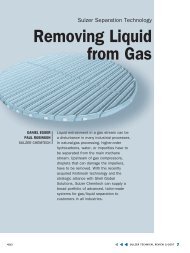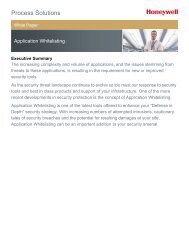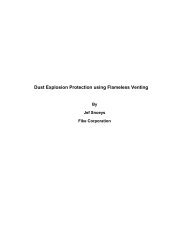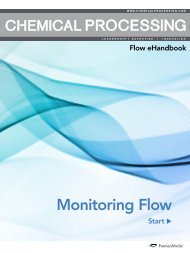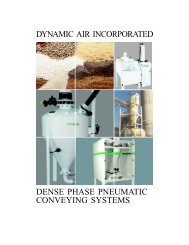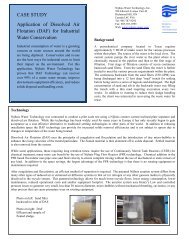Optimize Powder Processing - Chemical Processing
Optimize Powder Processing - Chemical Processing
Optimize Powder Processing - Chemical Processing
You also want an ePaper? Increase the reach of your titles
YUMPU automatically turns print PDFs into web optimized ePapers that Google loves.
Measure with ConfidenceThe correct weighing system and a proper maintenance schedule can ensure accuracyBy Steven Wise, Mettler-ToledoFrom measuring raw ingredients to verifyingthe final product packaging, industrial scalesplay a critical role in the manufacturing process.But how do you know that the scale used in yourprocess is the correct one and what the propermaintenance schedule is for your application,applicable regulations and location? The GoodWeighing Practice (GWP) methodology fromMettler-Toledo, a global manufacturer of precisioninstruments for use in industrial applications,can help answer these questions.Measurement Uncertainty in WeighingGWP is based on the concept of measurement uncertainty.Any measuring device, whether it’s a ruler,a speedometer, or a scale, has some measurement uncertaintyassociated with it. Uncertainty means thatno measurement is perfect, but is always distorted byrandom errors and unknown systematic errors. It’sexpressed as an error associated with the weight (10lbs ± 0.001 lbs).As with any measurement device, uncertaintydirectly affects the accuracy of the reported value in aweighing system (see Figure 1). The error is less significantwhen you are weighing something large relativeto the capacity of the scale. However, as you attemptto weigh something smaller and smaller on the scale,the relative uncertainty becomes more and moresignificant. At some point, the relative uncertainty isso significant that you lose confidence in the reportedweight value.For example, suppose you have a scale that’s accurateto plus or minus 1 gram. At 10,000 grams (10kg), this uncertainty represents one hundredth of onepercent (0.01%) of the weight. In many situations,that uncertainty is small enough that it won’t affectquality. Now suppose you’re weighing a 10 gramsample on this scale with an uncertainty ± 1 gram.Now the uncertainty represents a full 10% of the reportedweight. Your actual sample may be 10% largeror 10% smaller than what this scale is reporting justdue to the uncertainty.In the same way that you can’t use a standard 12-inch ruler to measure the width of a human hair, youcannot use a truck scale to weigh a feather accurately.Factors Affecting UncertaintyThe measurement uncertainty of a weighing systemis a combination of many factors. The readability,sensitivity, repeatability, non-linearity and eccentricityof the scale are all factors affecting measurementuncertainty and are associated with the scale design.The scale manufacturer can calculate the uncertaintyof the weighing system associated with these factors.However, the environment in which the scale isused also impacts the uncertainty of the weighing system.The environment is unique to every scale installationand cannot be calculated at the time the scale ismanufactured. Significant impacts from the environmenton weighing uncertainty can be attributed towind, dirt, dust, temperature fluctuations, vibrationsand operator errors among other factors. The only wayto calculate the measurement uncertainty associatedwith the environment is to test the scale installedin the environment using the appropriate tools andmethods.23


